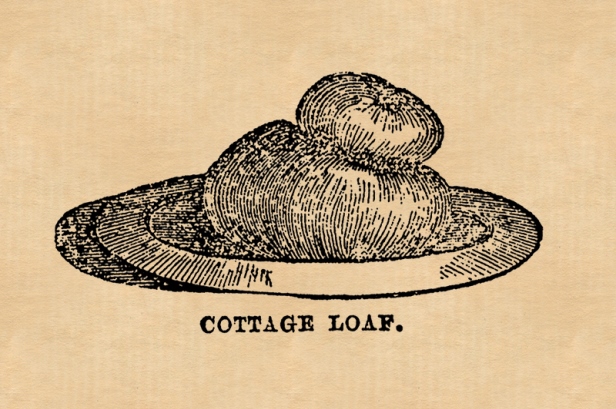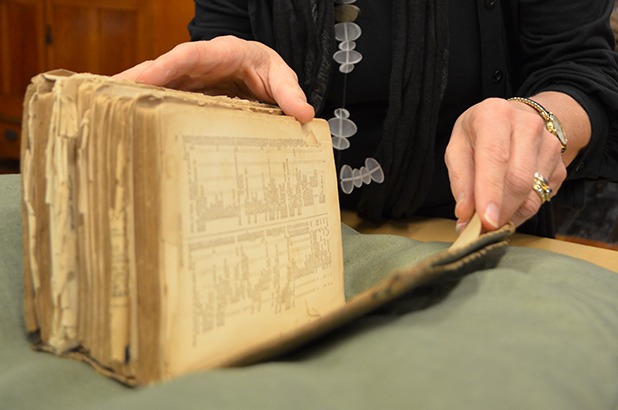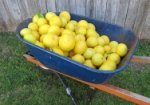My current research project (the outcomes of which will be revealed in the coming months – watch this space) has seen me revisit some wonderful personal accounts from Australians who lived ‘ordinary’, but to us, extraordinary, lives. I recently made mention of the diaries of free settler, George Wyndham (1801 – 1870), who chose the Hunter Valley as his home in the 1830s. We know his name as founder of Wyndham Estate wines, but his diaries that date between 1830 and 1840, tell of the years before wine became his main mission. Just building a house and being able to support his family and staff from what he could produce on his land, which he named Dalwood, was the priority of the day, with a bit of work on the side as a local magistrate. You can imagine the hollow feeling he must have had when he noted in March 1835 ‘No vegetables to eat this month.’
Charlotte Wright
Charlotte May Wright (1855-1929) was George Wyndham’s granddaughter, and she too, left valuable information about colonial settler life, in her memoir, ‘Memories of Far Off Days’. Her stories paint a rich picture of her life, but also that of her grandmother’s, Margaret Wyndham (George’s wife) particularly. Stories of endurance and hardship – weather extremes, recalcitrant convict servants, and worry for sick, and painfully, in one instance, dying, children; small joys and achievements, and appreciation of the natural bounty that the land afforded them. And of course, so important to me, dotted among the personal and more general household records are many useful food references.
Cob of corn or maize illustrated in Isabella Beeton, Beeton’s book of household management, facsimile reprint of 1861 edition, Jonathan Cape, London, 1968, p842. Caroline Simpson Library & Research Collection, Sydney Living Museums 640 BEE
Convict’s corn
Dalwood was, like many estate ‘headquarters’ of its ilk, a busy household. Margaret had 14 children, losing one to ‘colonial fever’ aka malaria. Not only did the estate have to support the family, it had to provide board and lodgings for its servants and labourers, most of them in the early days, convicts assigned to the Wyndhams for their term or sentence. Maize, or corn, grew well, but wheat was what was in demand, so most of the wheat grown would be sent to market, with a little kept a aside as a luxury item. Convict workers, lower order labourers and servants would be given maize instead, as cornbread or as a porridge-style ‘hominy’ or ‘burgoo’ which Wright said, ‘very wholesome it was, though not appetising for a constant diet’.
Bulk orders
Flour made from the homegrown wheat would be graded, ‘first flour’ the finest and whitest quality, ‘seconds’ more like a wholemeal today (15 – 20% meal) and the bran left over from processing the wheat used to make laundry starch, ‘one ounce (28g) of starch made with a pint (570ml) of water is sufficient for 12 shirts, 4 collars, waistbands and breasts’. According to her grandmother, Margaret Wyndham’s household notes, 17 pounds of first flour makes 23 pounds of bread – approximately 10 kilos finished product. No doubt this was the quantity made on a regular basis, to service the household’s needs.

Cottage loaf of bread illustrated in Isabella Beeton, Beeton’s book of household management, facsimile reprint of 1861 edition, Jonathan Cape, London, 1968, p839. Caroline Simpson Library & Research Collection, Sydney Living Museums 640 BEE
1 pound (450g) of flour, eight eggs and four tea-cups of milk, makes 20 pancakes the size of a pudding plate.’ I generally use 2 eggs per cup of flour, so this is a fairly rich batter. Dumplings too were useful ‘filler’ for hungry workers, ‘One and a half pounds (675g) flour and one and a half cups of suet makes pastry for 15 dumplings’ – I gather she means boiled dumplings, served with a savoury meal (where we might serve potatoes) or as a pudding, served with some kind of sweet syrup.
Hot competition
Consistent with other colonial accounts, apricot and peach trees abounded:
[they] grew half wild. Every hut and out-station had its grove of peach trees which bore loads of beautiful fruit without cultivation, pruning or spraying.
The trick was, however, to get to the fruit before the birds, possums and flying foxes who were equally tempted by the fleshy fruit!
Lost resources
Charlotte reminisced about the abundance of game available in the region – the lagoons on the Hunter River full of black duck and teal, bronzewing and the much lauded wonga pigeons could be found in the scrub. She lamented though, writing in the 1920s, ‘now there seem to be no lagoons and very few ducks’. European settlement and land clearing for agriculture had taken its toll on the natural landscape and affected the habitats of the native species, and we lost our taste for local game.



